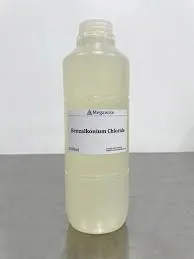flocculants used in water treatment
Flocculants Used in Water Treatment
Water treatment is a crucial process aimed at making water safe for human consumption and various industrial applications. One of the key components in this process is the use of flocculants, which play an essential role in the removal of suspended solids from water. This article delves into the significance of flocculants in water treatment, their types, mechanisms, and the benefits they offer.
What are Flocculants?
Flocculants are chemical agents that promote the clumping together of particles in liquids, leading to the formation of larger aggregates known as flocs. These flocs can then be easily removed from the water through processes such as sedimentation, filtration, or flotation. The primary goal of using flocculants in water treatment is to enhance the efficiency of solid-liquid separation processes, ensuring that the final water product meets safety standards.
Types of Flocculants
Flocculants can be categorized mainly into two types organic and inorganic flocculants.
1. Organic Flocculants These are typically synthetic polymers, including polyacrylamides and polysaccharides. They are favored for their high efficiency in forming flocs even at low doses. Organic flocculants can be further divided into cationic, anionic, and non-ionic types, based on the charge they carry. Cationic flocculants are effective in neutralizing negative charges of particles, while anionic types can be beneficial in specific conditions, such as treating industrial wastewater.
2. Inorganic Flocculants These include aluminum sulfate (alum), ferric chloride, and lime. Inorganic flocculants are simpler in composition and are commonly used in municipal water treatment plants. They work by destabilizing the colloidal suspension, allowing particles to aggregate and settle.
Mechanisms of Action
The effectiveness of flocculants depends largely on their mechanism of action, which involves four primary steps
1. Charge Neutralization Many suspended particles in water carry negative charges that prevent them from clumping together. Flocculants neutralize these charges, allowing the particles to attract and bond with each other.
flocculants used in water treatment

2. Bridging Flocculants contain long-chain molecules that can extend between individual particles, effectively linking them together in a larger network.
3. Aggregation As particles bond with one another, they gradually form larger aggregates called flocs.
4. Sedimentation and Removal Once the flocs are formed, they become heavy enough to settle at the bottom of the treatment basin or be captured by filters, resulting in clearer water.
Benefits of Using Flocculants
The use of flocculants in water treatment offers several key advantages
- Improved Water Clarity The formation of flocs effectively removes suspended solids, resulting in clearer and more aesthetically pleasing water.
- Cost-Effectiveness Utilizing flocculants can decrease the overall chemical usage and improve the efficacy of treatment processes, resulting in lower operational costs.
- Efficiency in Diverse Conditions Flocculants can be tailored to work effectively under varying pH levels, temperatures, and types of wastewater, making them versatile tools in water treatment.
- Environmental Benefits By enhancing the removal of pollutants, flocculants contribute to the overall protection of aquatic ecosystems when treated water is released back into the environment.
Conclusion
In conclusion, flocculants are indispensable in modern water treatment processes. Their ability to enhance solids removal and improve water quality makes them vital for both municipal and industrial applications. As we continue to face challenges related to water scarcity and pollution, the use of flocculants will remain pivotal in ensuring that we can provide safe and clean water to meet the needs of a growing population. The ongoing research and technological advancements in this field promise to further optimize their use, paving the way for more sustainable water treatment solutions.
-
Dodecyldimethylbenzylammonium Chloride: High-Purity DisinfectantNewsAug.30,2025
-
2-Phosphonobutane-1,2,4-Tricarboxylic Acid: Scale & CorrosionNewsAug.29,2025
-
Premium Isothiazolinones | Broad-Spectrum Biocidal SolutionsNewsAug.28,2025
-
LK-319 Special Scale And Corrosion Inhibitor For Steel Plants: Advanced Solutions for Industrial Water SystemsNewsAug.22,2025
-
Flocculant Water Treatment: Essential Chemical Solutions for Purification ProcessesNewsAug.22,2025
-
Isothiazolinones: Versatile Microbial Control Agents for Industrial and Consumer ApplicationsNewsAug.22,2025





